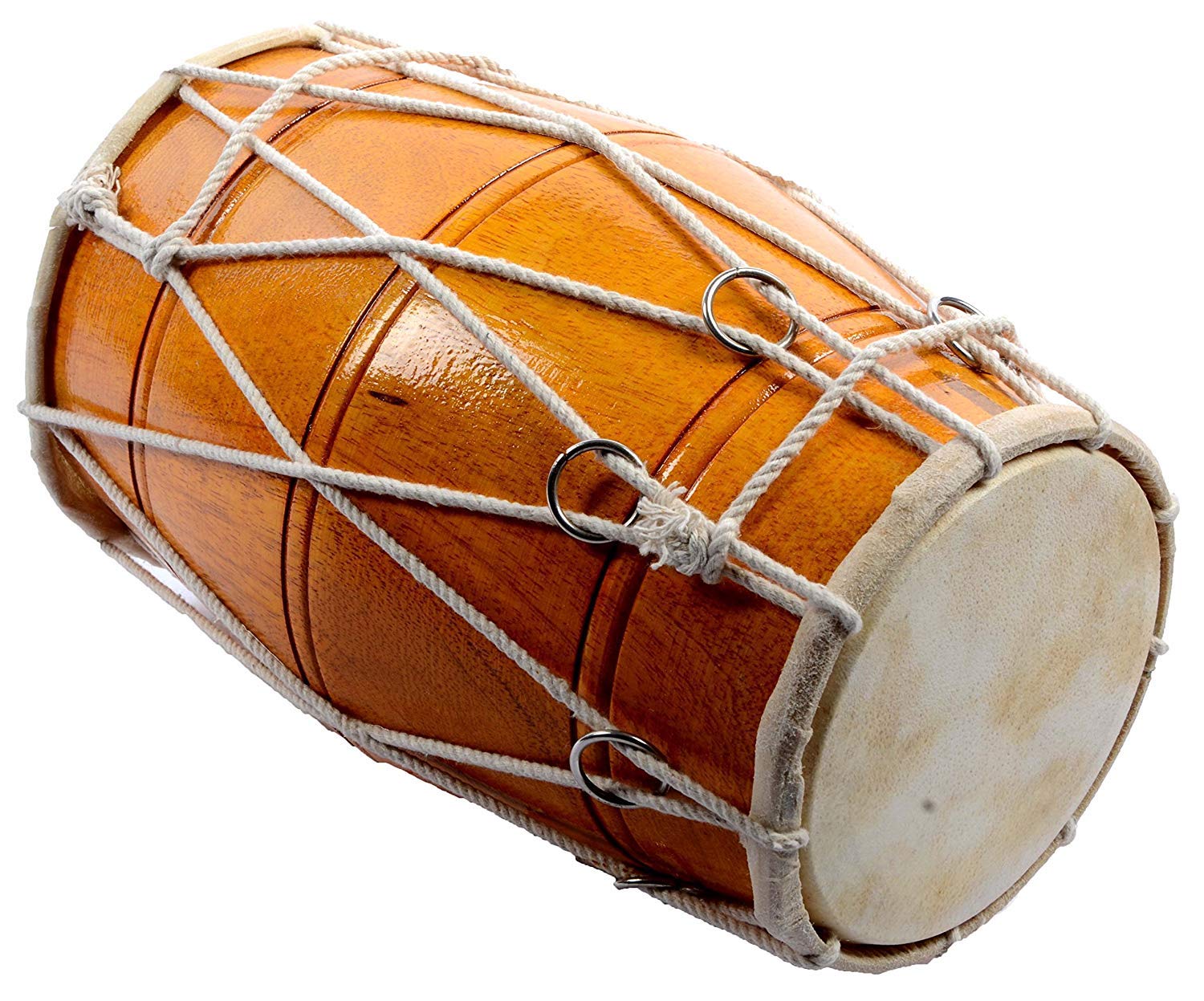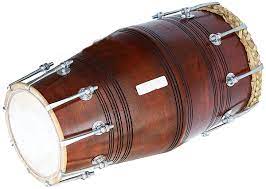Dholak
Percussions
Asia
Between 1001 and 1900 AD
Video
The dholak is a two-headed hand drum traditionally associated with folk and classical music across South Asia. It is a versatile instrument used in diverse musical genres, including bhangra, qawwali, and Bollywood music. The dholak produces a resonant, rhythmic sound that adds energy and texture to musical compositions. Its lightweight and portable design makes it an essential instrument in various cultural celebrations, such as weddings and festivals.
It is a percussion instrument and falls under the membranophone category in the Hornbostel-Sachs classification system. Membranophones are instruments that produce sound primarily through the vibration of a stretched membrane. The dholak’s sound is generated by striking the drumheads with the hands or fingers.
History and Origin of Dholak
The dholak originated in the Indian subcontinent and has deep roots in South Asian culture. It has been a prominent instrument in countries like India, Pakistan, Nepal, and Bangladesh. The instrument is also used in diasporic communities worldwide, spreading its cultural significance beyond South Asia. The history of the dholak dates back several centuries, with its earliest references found in ancient Indian texts. The instrument became widely recognized during the medieval period, particularly in the 16th and 17th centuries, when it was used in folk traditions and courtly performances. Over time, the dholak evolved to become a staple in both rural and urban music scenes.
Construction
The dholak is typically crafted from a hollow wooden shell, with drumheads made of animal hide or synthetic materials. The body of the drum is often made from Sheesham, mango, or teak wood, chosen for its durability and resonance. The drumheads are secured with rope or metal tensioning systems, allowing for pitch adjustment.
The drum has two heads: the smaller head (called “dayan”) produces high-pitched sounds, while the larger head (called “bayan”) produces bass tones. A paste or dough-like substance is sometimes applied to the inside of the larger head to modify its tone.
Types of Dholak
Traditional Dholak: Made with natural materials and used in folk and classical music.
Modern Dholak: Constructed with synthetic materials and designed for durability and amplified performances.
Temple Dholak: Larger and louder, often used in religious settings.
Portable Dholak: Lightweight and compact for ease of transport.
Features
Double-Headed Design: Produces a range of tonal variations.
Portable Size: Easy to carry and play in various settings.
Adjustable Pitch: Allows players to tune the instrument to their preference.
Rich Sound: Combines high and low tones for a dynamic auditory experience.
Versatile Use: Suitable for traditional, contemporary, and fusion music styles.
Sound Production
The dholak produces sound through the vibration of its drumheads. When struck, the membrane vibrates, creating sound waves that resonate within the hollow body of the drum. The tension of the drumheads and the material of the body influence the quality and pitch of the sound. Skilled players can produce intricate rhythms by varying the force and placement of their strikes.
Playing Methods
The dholak is typically played while seated, with the drum resting horizontally on the player’s lap or a stand. Players use their palms and fingers to strike the drumheads, creating rhythmic patterns. The smaller head is played with the dominant hand to produce sharp, high-pitched sounds, while the larger head is played with the non-dominant hand to produce deeper, bass tones. Techniques like open strokes, slaps, and rolls add complexity to the rhythms.
Roles in Music
The dholak serves as a backbone for rhythm in many musical genres. Folk music, provides lively beats that enhance storytelling and dance. In classical music, it complements melodic instruments with intricate rhythmic patterns. In modern music, it adds a traditional flavor to contemporary compositions. The dholak is also integral to devotional music, where its rhythmic pulse creates a spiritual ambiance.
FAQ
What is the significance of the Dholak in South Asian culture?
The Dholak holds significant cultural importance in South Asia as it accompanies various traditional music genres like Qawwali and Bhangra. It symbolizes celebration and community spirit during weddings and festivals.
Where did the Dholak originate?
The Dholak originated in the Indian subcontinent, with historical roots tracing back to at least the 15th century. It has since evolved into an essential instrument across India, Pakistan, and Bangladesh.
How is a Dholak constructed?
A Dholak is constructed from a hollow wooden body with two drumheads made from animal skin or synthetic materials. Tensioning mechanisms allow for tuning adjustments to produce desired pitches.
 Links
Links
References
Other Instrument
Categories



















